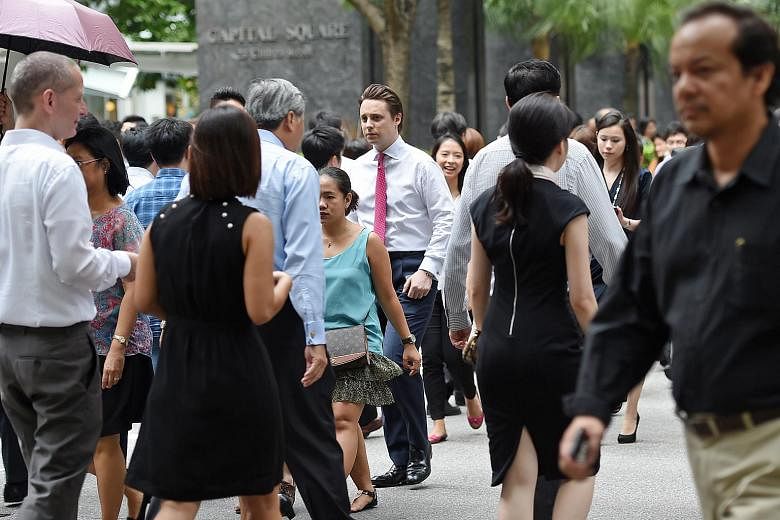Productivity has been one of the most difficult challenges for Singapore's economic planners, a recurring problem that started in the early years of its economic development.
Back in the 1970s, the Government focused on attracting foreign investments to grow the economy.
The move was so successful, with companies coming here creating so many jobs, that the country had to allow a large inflow of foreign workers to meet the demand for labour.
But it was clear that this was not a sustainable mode of growth. Other countries in the region were also adopting the foreign investment model, and Singapore had to start upgrading its workforce and move up to higher-value industries.
By the end of the decade, the Government had begun to turn its focus to raising wages to encourage industry and company restructuring to become more productive.
In 1981, then Prime Minister Lee Kuan Yew said in his eve of National Day Message that workers would only be able to continue to afford the rising prices of goods and services by increasing their earning capacity through increasing productivity, "which means workers with more skills and professionalism, cooperating with each other and with management to reduce the unit cost of each product".
This set the stage for the launch of the nationwide Productivity Movement in September 1981.
It was also about then, in 1982, that Teamy the Productivity Bee mascot was introduced. He stuck around to remind people of the need to maintain their productivity levels all the way until 1999.
The 1990s was a golden decade for Singapore as the country raced ahead, clocking double-digit growth rates regularly before the Asian financial crisis.
At the same time, the foreign worker population continued to rise, from about 300,000 in 1990 to about 700,000 in 2000, according to a 2014 paper by Lee Kuan Yew School of Public Policy research associate Hawyee Auyong.
But some economists started to doubt the sustainability of Singapore's growth model.
Massachusetts Institute of Technology economist Alwyn Young and Stanford University economist Paul Krugman charged that the country was not increasing its Total Factor Productivity. In other words, it was growing through adding resources - capital and labour - rather than using these resources more efficiently or productively.
Then Prime Minister Goh Chok Tong rebutted claims that the country's economy would collapse after "growth on steroids", saying that the first priority was to get development going. "We will invest heavily in education and retraining, in organisation and motivation, to combine inputs with increased efficiency, new ideas and technology," Mr Goh had said at the 1995 Federation of Asean Economic Associations Conference.
The Singapore economy then suffered a series of external growth shocks, starting with the Asian financial crisis in 1997, the dot.com bust in 2001 and the Sars epidemic in 2003. That prompted the Government to open up the gates to foreign workers again, a move that then Finance Minister Tharman Shanmugaratnam said in 2010 had allowed Singapore to "go for growth in the good years".
At the same time, a two-tier economy developed over the decades because of the continued focus on attracting foreign companies, which tend to be more productive as they have to be globally competitive, compared with domestically oriented sectors.
Less productive sectors expanded their share of the workforce from 2008 to 2013, dragging down overall productivity growth by 0.4 percentage point per year, according to an article by Ministry of Trade and Industry economist Goh Tee Wei.
A range of measures has been introduced to try to slow the growth of and upgrade the foreign workforce here, while encouraging companies to make more efficient use of workers, and workers to become more skilful in their jobs.
Today, the Government has made it clear that the policy of allowing large numbers of foreign workers is over, and that companies and workers both need to go back to the basics of raising productivity, just like the economy did decades ago.


